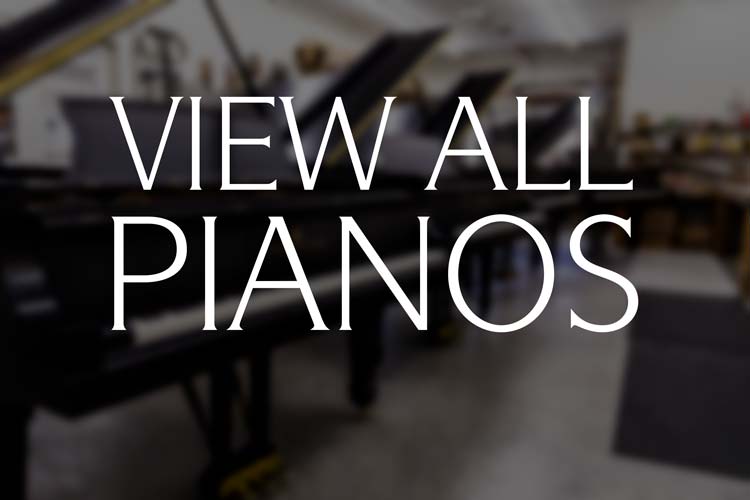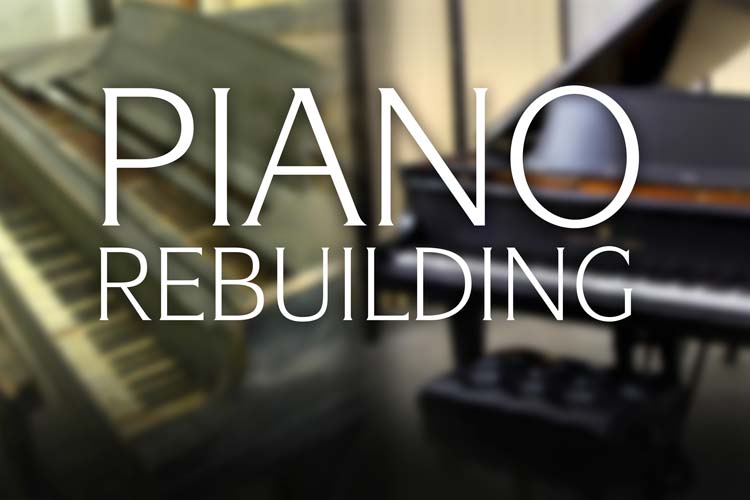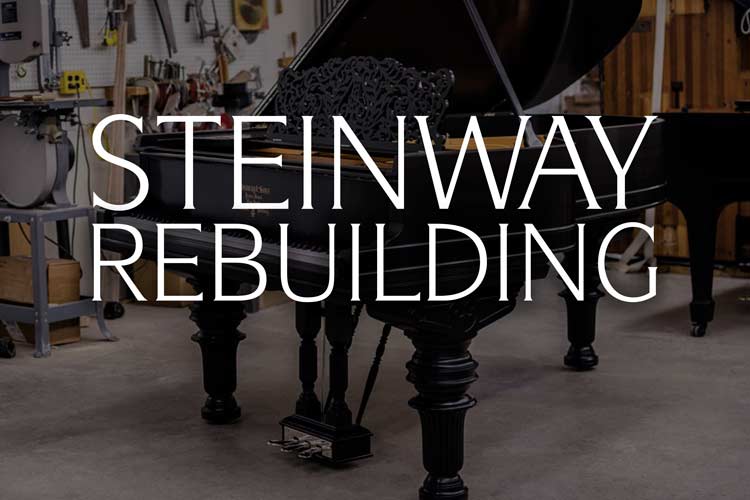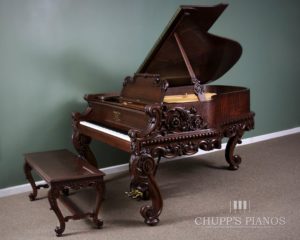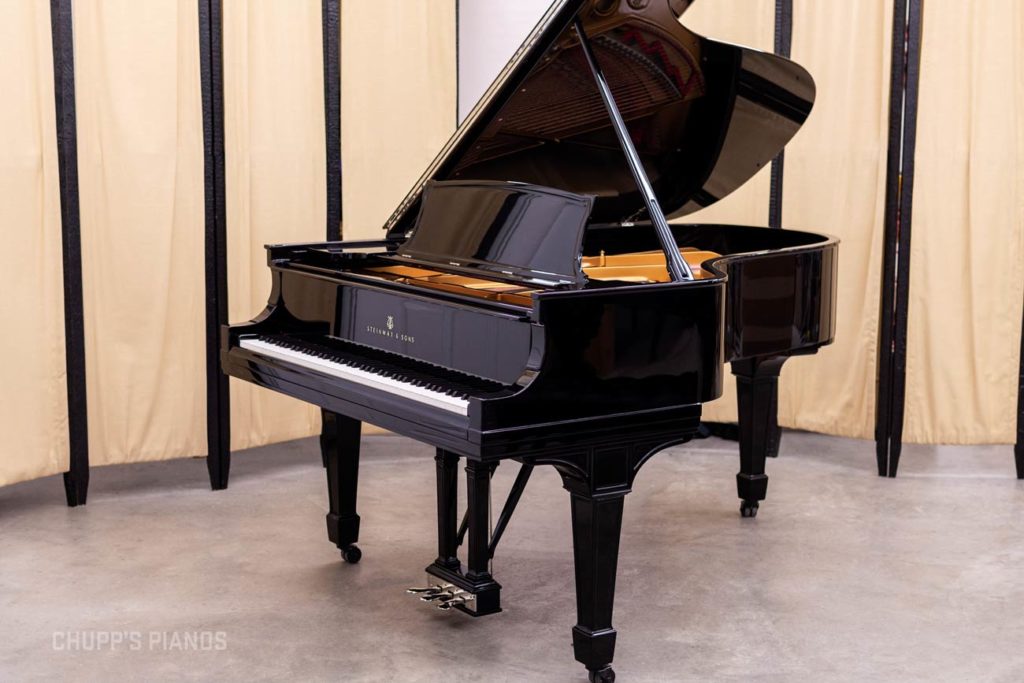
The Steinway Model A Family | What’s the Difference?
Question: “I was looking at Steinway Model Grand Pianos and noticed that there are pianos labeled Model A-1, A-2 and A-3 and it is getting a bit confusing. What is the difference between these models of Steinway pianos?”
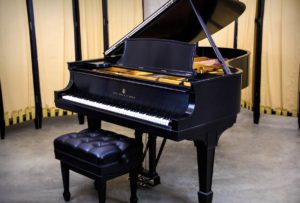
A Restored Steinway Model A, Style III Grand Piano
The First Model A Grand Piano | 1878
The Model A family consists of several ‘six-foot’ variants within Steinway’s line of parlor grand pianos. The A-1, A-2, and A-3 (sometimes dubbed the Model A, Style I, Style II and Style III within internal Steinway documents) are all part of the same family, yet there are some distinct differences between them and even differences within those sub-models. Steinway & Sons was founded in 1853 and the first Model A, the A-1 was first introduced in 1878. This original Model A-1 Grand measured 6′ in length. An 85 note piano, it featured a scale design that was scaled down from the larger Steinway Model B. When first introduced, the Model A was actually the smallest of all of the grand pianos built and sold by Steinway. (This was before the introduction of the Model, O, L, M or S.)
The scale design was crafted by C.F. Theodore Steinway, an innovative man credited with many of the patents and technical advances introduced by Steinway & Sons in their early days of operation. This model was fairly historic in terms of innovation and introduced the bent rim case construction which allowed for a better transfer of soundboard vibrations and a much sturdier cabinet. This manufacturing technique is still in use today. These early Model A pianos are quite narrow and barely over 6′ in length. When placed next to a modern Model O for example, they actually appear to be nearly same size. They were all originally built with ‘art case’ style legs and figured music desks as was standard during this period.
The 85 note Model A-1 was replaced in 1892-93 by the 88 note Model A-1. The original scale design was modified by master piano designer Henry Ziegler. This new 88 note Model A-1 was not produced for long and was replaced in regular production in the year 1897 by its replacement – the Model A-2.
The Model A-2 Grand
The Model A-2 ‘long scale’ began concurrent production with the 88 note A-1 scale in 1896. The change in the shape of the tail allowed for an increase in soundboard area, creating a better and fuller tone. Many other improvements and new design features were added to the new A-2. Slightly longer than the A-1, the A-2 measured in at slightly longer than 6’. (But it was still listed as 6’ in Steinway catalogs.) The Model A-2 short scale was introduced in 1905 as the replacement for its predecessor, the long scale. This new short scale design featured a more seamless tonal progression from the high bass to the lower treble section. The short scale Steinway Model A-2 was in regular production in New York until 1914 and continued in production at the Hamburg factory. Early production Model A-2 grand pianos were often seen in an almost’ transitional’ cabinet style. The legs were often larger in diameter than today’s pianos and the square cabinet arms differed in style. Near the end of the Model A-2 era, there was also a number made that are considered to be of a fully modern Sketch 380 style. This scale made its New York return almost a century later, but more on that in a bit.
“We believe this improved scale to exhibit several excellence. It possesses a much larger tone than any other Grand piano of its size.” – Steinway Business Letter, June 22, 1897.
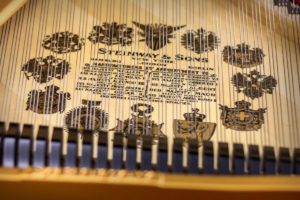 The Model A-3 | ‘Stretch A’ Grand Piano |
The Model A-3 | ‘Stretch A’ Grand Piano |
The Steinway Model A-3 is where the Model A family makes a big step in both size and sound. Measuring in at 6’4 1/2”, The Model A-3 is much larger than the previous Model A Grands and features a greater power and range of tone. It is considered to be very comparable to what has been dubbed the ‘perfect piano’, the Steinway Model B. These pianos were more affordable than the Model B, was more manageable in size and produced a sound and power that was most definitely on par with its 6’11” brethren.
In 1913 and 1914 the Model A-II and A-III were both listed in Steinway price lists and sold concurrently. This piano was a staple of the New York factory only and never went into production in Hamburg where they continued production of the short scale Model A-II. The Model A-III continued in production until the mid 40’s. In 1945 the Model A-III was discontinued by Steinway New York. Reliable rumors indicate that production ceased due to the competition it created for the larger and more expensive Model B.
The Return of the Model A (But not the A-III)
From the 1940s until the mid-2000s, there were no Model A grand pianos produced by Steinway & Sons in New York. However, in 2005, Steinway re-introduced the Model A. Rather interestingly the Model A-III, the larger ‘stretch A’ was not the piano put back into production. Instead, the Model A-II, short scale made its return in a smaller, 6’2” size. The Model A series of pianos has seen its size change and its power as a musical instrument shift as well over its long history. Many consider the Model A-III to be one of the finest scale designs that Steinway ever produced, with it being a “7’ piano in a 6’4” package.” This is the piano I have in my own home and is the one we recommend the most for home and select performance usage. When properly rebuilt and restored, Model A-III grands are some of the most versatile of all of Steinway’s pianos and they are one of my favorite scale designs. Steinway Model A Grand Pianos occupy an important position within Steinway’s line of legendary instruments. (Click here to view our Model A Grands we currently have in stock.)
Have a question you would like us to address?
Send us a quick message via the chat box on this page, or click here to go to our quick and easy contact form.
Chupp’s Piano Service | Vintage Steinway Restoration | Authorized Kawai Piano Dealer | Vintage Mason & Hamlin
Comments are closed

